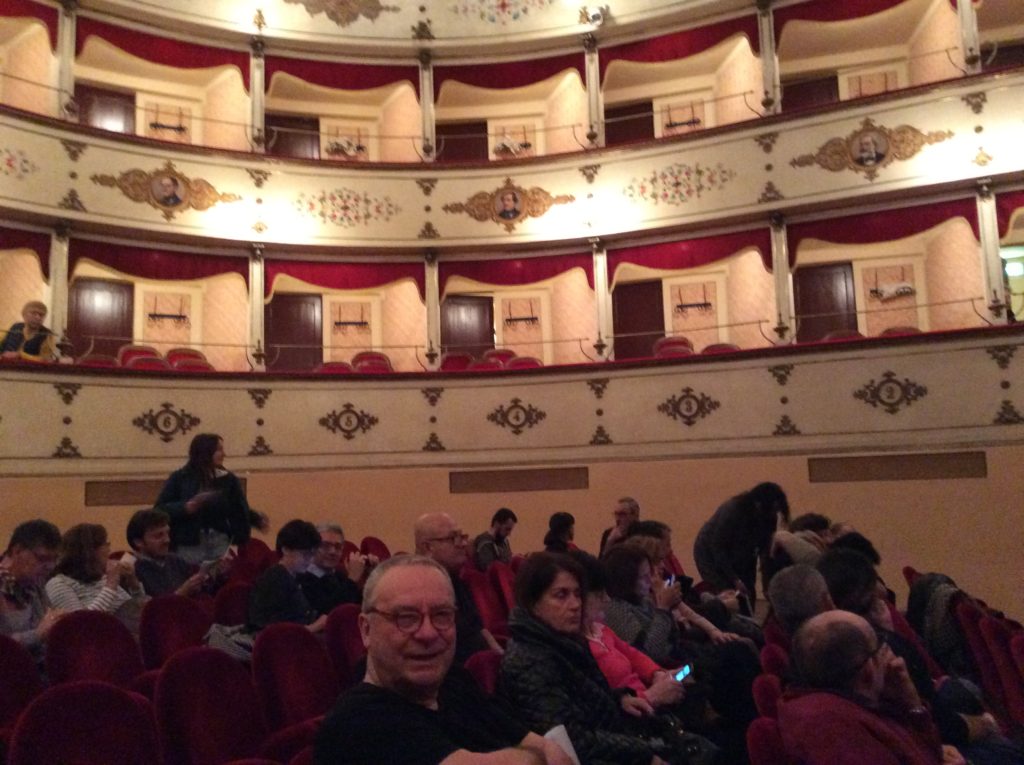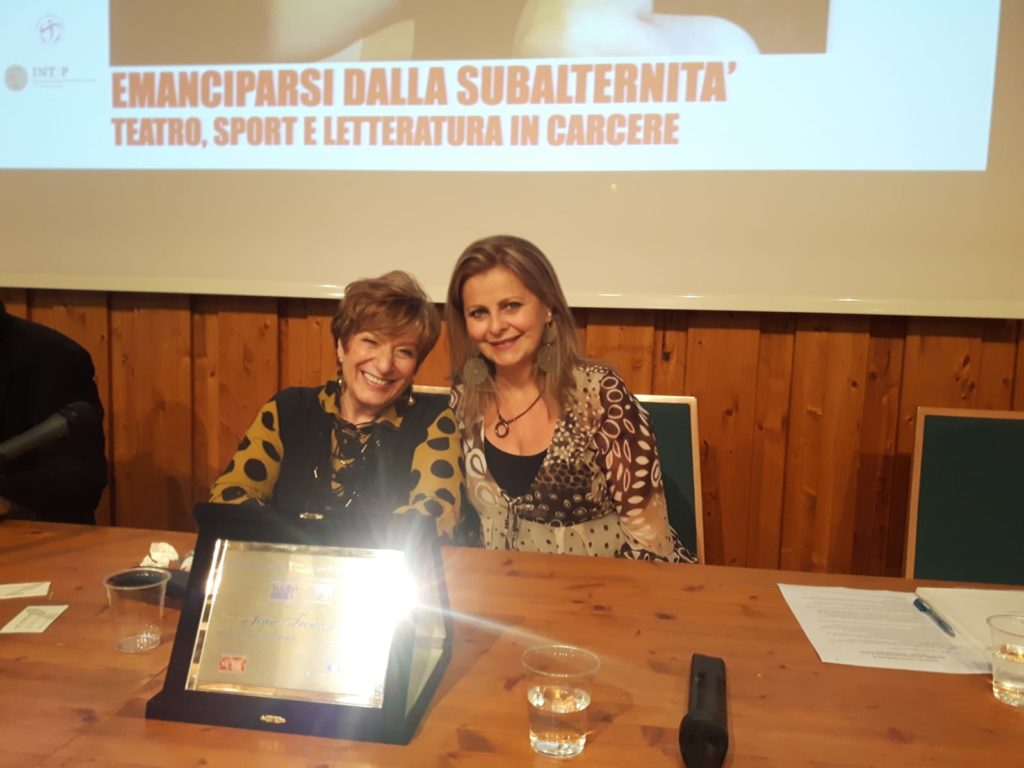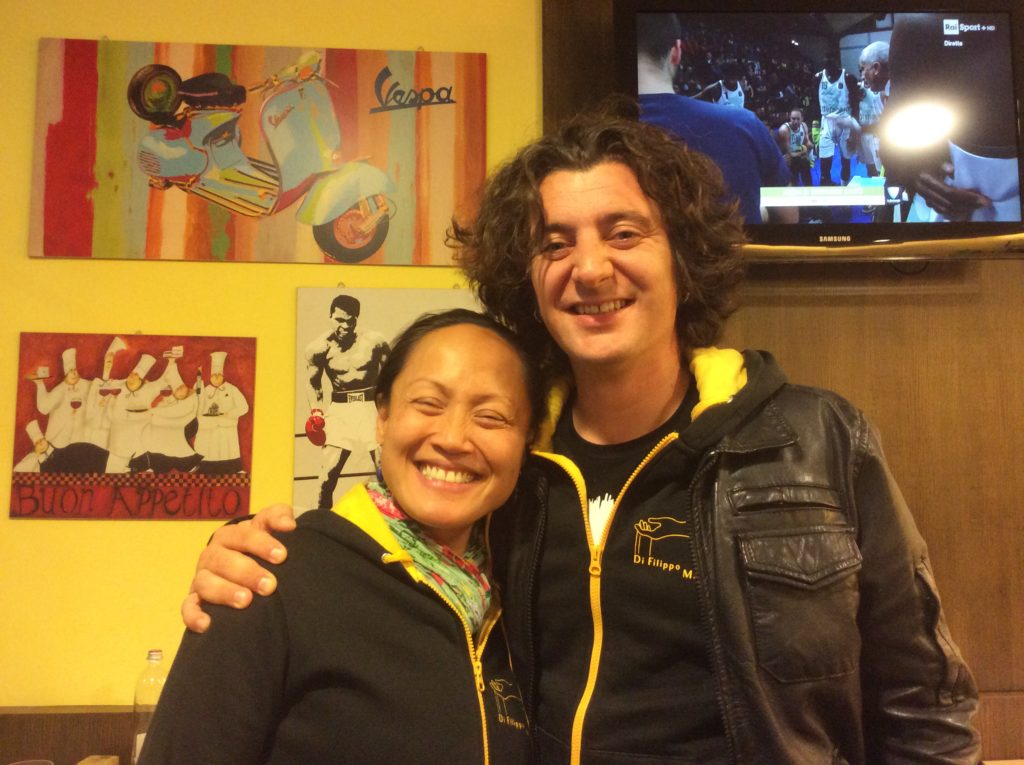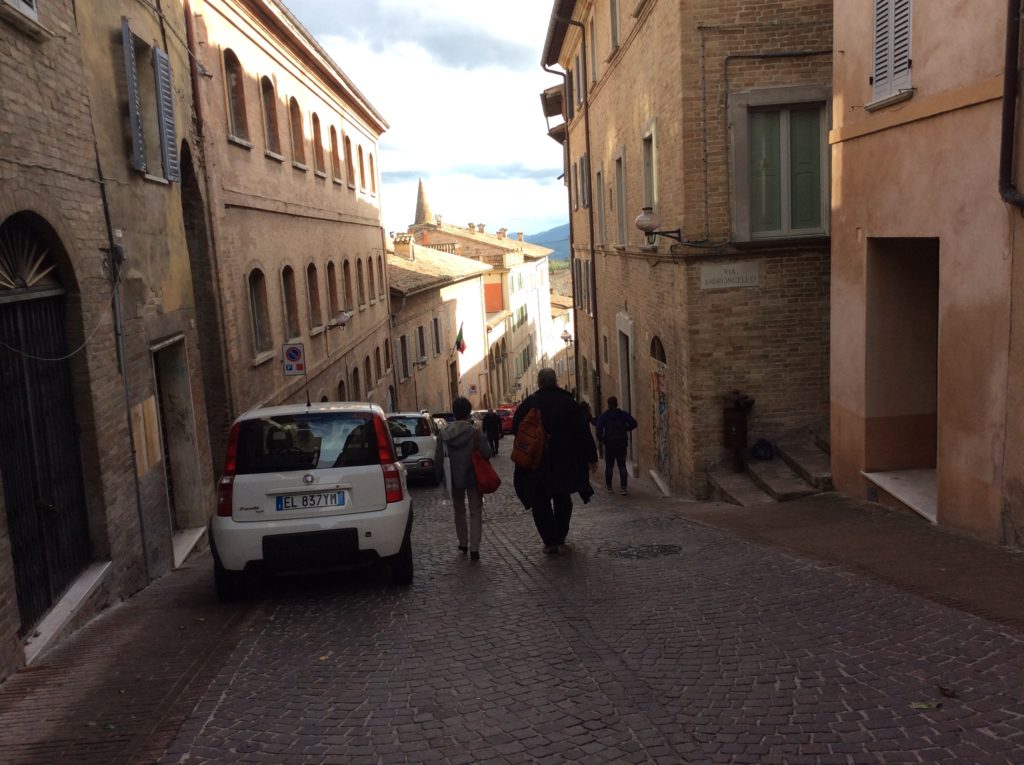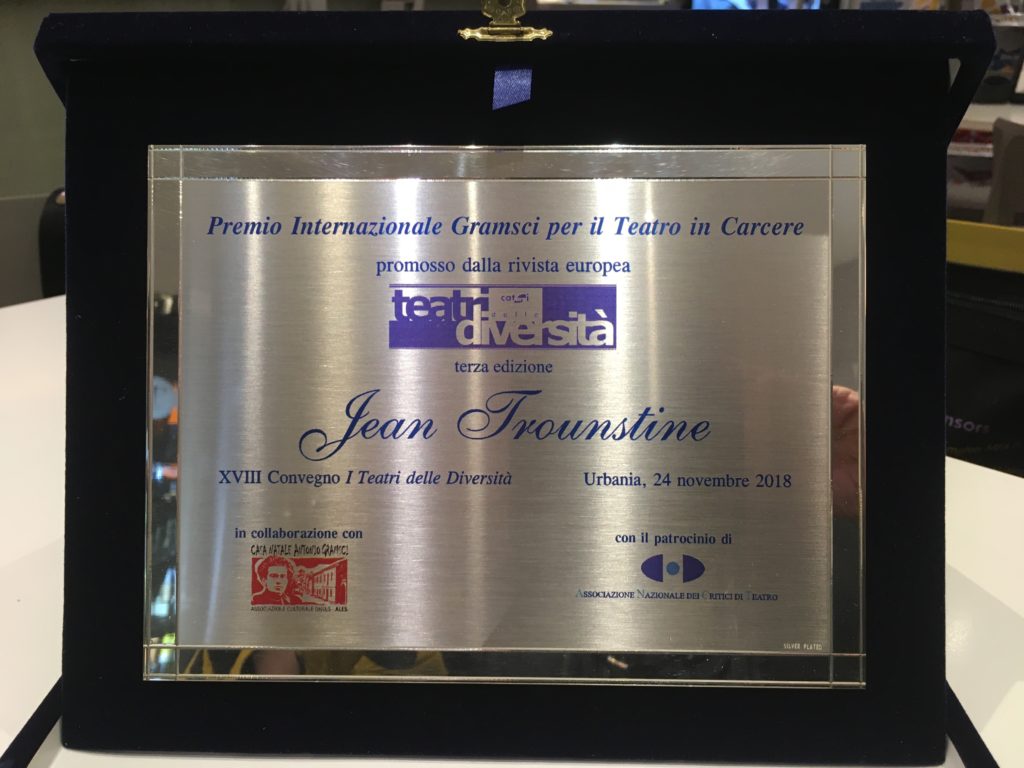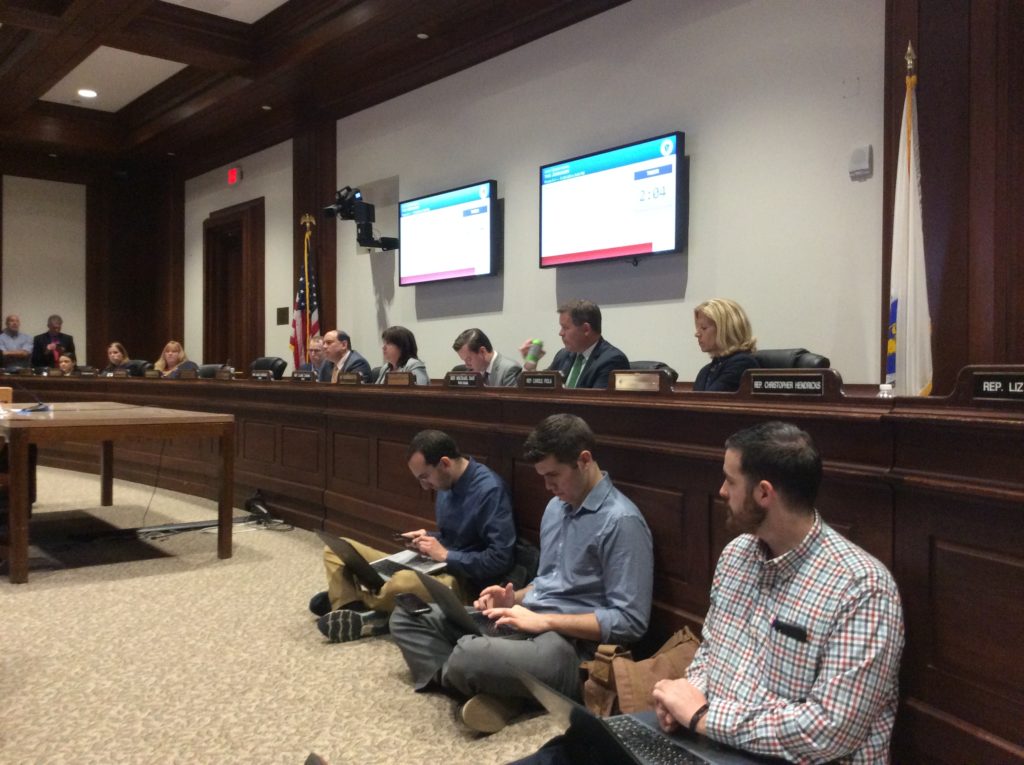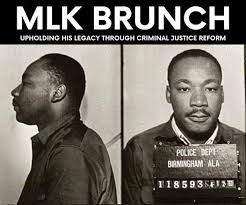 Photo is from the program at the church and from the Reverend Dr. Martin Luther King Jr.’s mugshot from Birmingham Jail. I gave the speech below yesterday at the First Congregational Church in Billerica, MA.
Photo is from the program at the church and from the Reverend Dr. Martin Luther King Jr.’s mugshot from Birmingham Jail. I gave the speech below yesterday at the First Congregational Church in Billerica, MA.
It is a privilege for me to be here today, to speak to you about some of what is most important to me about justice, as we honor the Reverend Dr. Martin Luther King Jr, a man whose name is synonymous with that word.
I also stand here before you today wondering how Dr. King might have felt as he spoke to you, a congregation and a community who have the awesome task, and I use that word in the same sense as Dr. King might have used it, “a task full of awesome responsibility,” to hold up and stand behind and give love to your senior pastor, Katherine Adams and her family, suffering with so much loss.
Most of us are no strangers to grief. One year ago I lost one of my dearest friends to a sudden death, Lillie A. Estes, who, like your minister, was a beacon of light for her community. Lillie’s passing taught me many things, among them: when we are devoted to a community and one of us suffers, all of us suffer. To honor the memory of someone is to honor those she holds close. And so my heart goes out to all of you.
My heart too feels the pangs of another incident that happened just a little over a week ago when a mother, taking her son to a town-owned playground off Andover Road in Billerica, discovered a swastika sprayed on a container storing baseball equipment. She and her son were Jewish, and she was probably as shocked as most Jews would be in 2020. I know this because I too am Jewish and I was shocked. But we’d have to have our head under rocks not to know that such incidents have proliferated across the country, and synagogues—even in our own liberal state of Massachusetts–are now applying for “security” grants, funding for organizations at high risk of terrorist attack or hate crimes. Muslims have felt this for years. And of course, isn’t it terrorism when black and brown people are whisked out of their cars, arrested at rates that far exceed whites, and then they fill our prisons to the tune of “mass incarceration?” The scholar Michelle Alexander who wrote THE NEW JIM CROW has planted that term in our consciousness with her subtitle, Mass incarceration in the Age of Color-Blindness.
I ask myself about this too, and wonder what Martin Luther King Jr. would say today in response to this hatred? He once said in a famous sermon, ”Loving Your Enemies,” “Darkness cannot drive out darkness; only light can do that. Hate cannot drive out hate; only love can do that.”
That’s true. And yet, love was not the only answer for King. More familiar with hatred and racism than most of us, King gave a sermon addressing hate on March 8th, 1965, the day after “Bloody Sunday,” on which civil rights protesters were attacked and beaten by police on the Edmund Pettus Bridge in Selma, Alabama. In that sermon, he said, “A man dies when he refuses to stand up for that which is right. A man dies when he refuses to stand up for justice. A man dies when he refuses to take a stand for that which is true.”
Fighting for social justice and continuing to fight in spite of setbacks and defeat and even in spite of hatred is my way to create light. And so I come to why I was invited here, to inquire more about that word justice. To ask and perhaps to answer a bit the question “What Kind of Justice System Do We Want for Juveniles?” Elie Wiesel, the famous Holocaust survivor who died recently at age 87 was also someone who had Anti-Semitic graffiti found at the house where he was born in Romania. He wrote in his Nobel-peace winning book Night, there is more power in asking a question than in answering it.
And so again, I ask you, what Kind of justice system do we want for juveniles?”
Let’s suppose for a moment that the person who sprayed that hateful graffiti perhaps was an eighteen-year-old. He’d be labeled at this point in time an “adult” under Massachusetts law, but he would literally be a teen who I have come to understand has a brain that would not be fully developed until he was aged 26. Perhaps he was drinking or on drugs or perhaps he was swayed by his peers into such action. Maybe he took a dare to spray paint his hate late at night and would return to his fraternity at college to play “Kill Jews” like some teens did a few years ago in Bedford. Perhaps we hate everything that he has done.
And yet what if he were our son? Our grandson, brother or nephew? What would we want for him? What should his punishment be?
Would we want to throw him into an adult prison where, like 250,000 other youth held in adult facilities, he’d be 36 times more likely to commit suicide, and 100% more likely to face sexual assault than those sent to juvenile placements? If he were a youth of color, he’d be treated more harshly than a white young man at every step of the process beginning with arrest. He’d be nine times more likely to receive an adult sentence than his white counterparts. He’d receive less support from his family than if he were seen as a juvenile.
If we sent him to an adult prison, he’d receive less counseling, medical care and education. And once he got out of the adult facility, he’d have more difficulty re-entering our society, finding a job, getting accepted at a private college. He’d possibly be labeled a “felon” for life.
Is this the path we’d take him on? Or would we want something else for this child?
If he were Native American, the elders might ask him to join a circle with some family members and other community members offended by his hateful act. Elders too might join in and together all would come to a conclusion about how he could make amends to those he has harmed. Restorative justice is different from retributive justice because it asks for those harmed to be a part of the resolution. Punishment may be part of the solution, but it may also include apology and making amends and even forgiveness.
Anyone who has broken the law is more than the face of his or her crime. I know this from meeting and writing a book about Karter Reed, who in 1993 killed another teen when he was sixteen years old. The media said that this high school sophomore “stormed” into a classroom, “wielding” a knife, aiming to settle a score with some guys who had “disrespected” his crew. And if you followed this case or the case of numerous other young people who commit heinous crimes, you might forget to consider their youth, their impulsivity, their unformed but harmful actions. Because it is natural to want to strike back. However, as Dr. King said, “The ultimate weakness of violence is that it is a descending spiral, begetting the very thing it seeks to destroy…Returning violence for violence multiplies the violence.”
Karter did indeed stab an unarmed boy, Jason Robinson, and the story behind the crime, how Karter came to believe that he was righting a wrong and standing up for his friends would become clear over time. For me, Karter’s crime was never in dispute but the punishment for the crime was. At sixteen, he was essentially thrown away. He was tried and convicted as an adult, sent to prison for the rest of his life, with only the possibility of obtaining his freedom after serving fifteen years. At the time of Karter’s sentencing, he was treated as if he were incapable of change. In fact the prosecutor wanted him to be sentenced to life without parole, i.e. to a virtual death sentence. And the judge in his juvenile court transfer hearing, said, he did believe Karter would not change.
Until 2005, the US was the only nation that still sanctioned the death penalty for youth. In 2012, the U.S. Supreme Court case Miller v. Alabama declared juveniles could not be sentenced to life in prison without the possibility of parole. It was seen as cruel and unusual punishment.
By the time Karter found remorse, transformed his life, fought for his freedom, and came out of prison–the story I tell in Boy With a Knife–he had served more than twenty years. Today he is married, a homeowner with a decent job, a forty-three year-old who graduated Summa Cum Laude from Quinsigimond Community College in Worcester. He has repaired relationships with his family but he will never be able to repair any harm he caused the Robinson family because he is prohibited by the court to speak with them.
If Karter had gone into the juvenile system, he would have been held accountable but had more education, counseling, and been housed with youth his own age. He might have still had to serve adult time, but not until he was twenty-one. If he were European and sentenced as a British youth, he might have served 10 or 12 years instead of 20. He might have never gone to an adult prison.
If you are not aware of this fact, in Massachusetts, if a child as young as fourteen is accused by a prosecutor of murder, he will be automatically tried in the adult system.
Incapable of change. Is anyone the same today as they were at age fourteen? Fifteen? Under our current law, for the purpose of sentencing, we call adults, anyone over age eighteen . Who cares if he cannot buy cigarettes until age 21, he can go to an adult prison. Citizens for Juvenile Justice and many other youth agencies want Massachusetts to pass a law to Raise the Age to include 18-20 year- olds in the juvenile justice system. This would be a wonderful advancement and yet the Karters of the world, those who committed murder as teens, would still be tried and undoubtedly sentenced as adults.
Danielle Sered, writing in her phenomenal book about restorative justice, Until We Reckon, says that our responses to violence, the way that healing can occur for all parties, means programs that are survivor-centered, accountability-based, safety-driven, and racially equitable. To me, she sounds more like Reverend King than anyone I’ve ever read when she writes, “We will not work our way out of violence if we continue to believe that solving violence is about managing monsters. Nor will we do it if we continue to believe that punishment is an adequate substitute for healing.” It does not reduce violence, says Sered. In fact it increases violence.
Towards the end of his life, Dr. King condemned the violence in the country that he saw in riots and uprisings for equality, but he also was “vigorous in condemning the conditions which cause persons to feel that they must engage in riotous activities.” He said, “In the final analysis, a riot is the language of the unheard.”
I wager that many young people who commit acts of violence feel unheard. While we must not justify the acts, we have to find ways to hear the anger and rage that is behind violence. We have to find ways to heal, to fight with our eyes open and “reckon” seriously and safely as Danielle Sered would say because that is the opposite of violence.
So, what kind of justice system do we want for juveniles? I leave you to consider the answer to that question as you ponder Karter Reed’s words: “Human beings are fallible. We all make mistakes, use poor judgement, and make regrettable decisions. Some of us, unfortunately, go further and commit unjustifiable or unconscionable acts that bring undeserved heartache and suffering to our victims and their families, something I agree is tragic and unacceptable. But we are not beyond redemption. No one should be judged solely on the worst thing that they have ever done. We are all capable of change, to become productive contributors to our families and society, and to make a difference in the world for the better.”
To repair the world, or as we say in Hebrew, a call to action, “Tikun Olam.”
Thank you very much.

